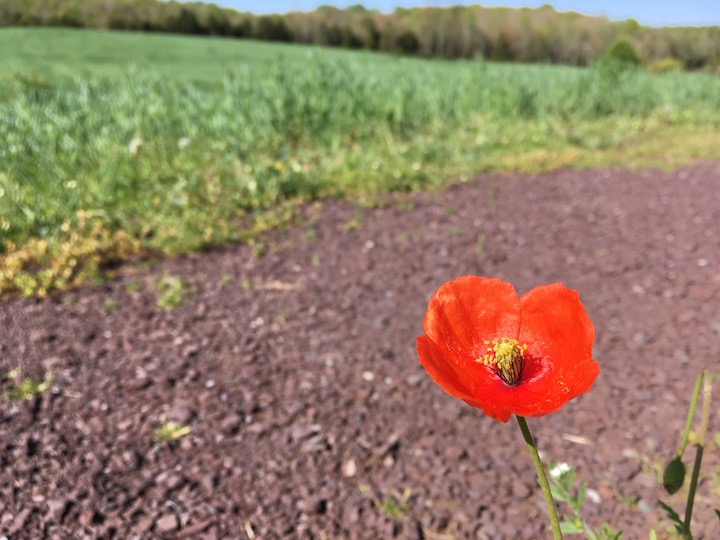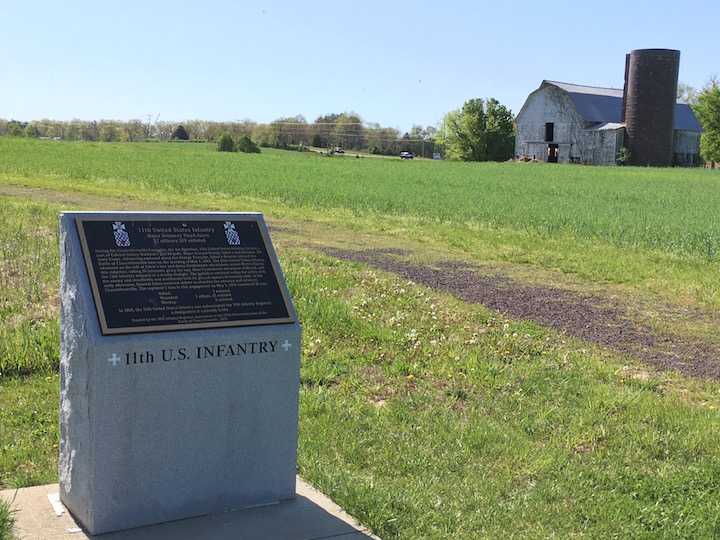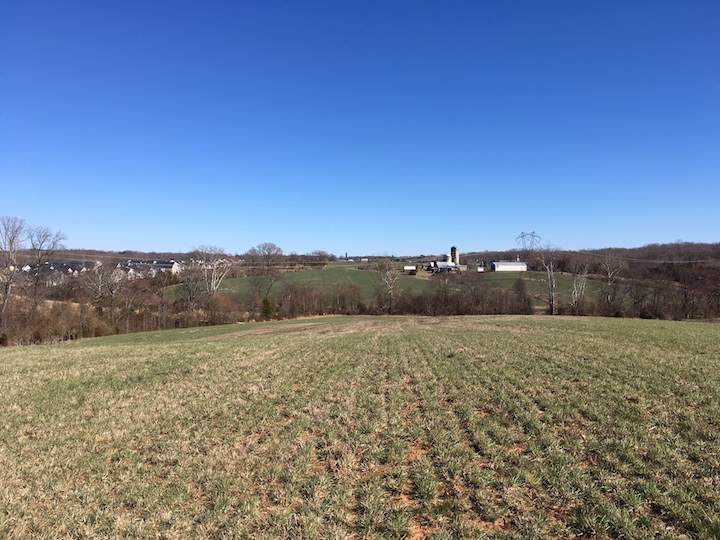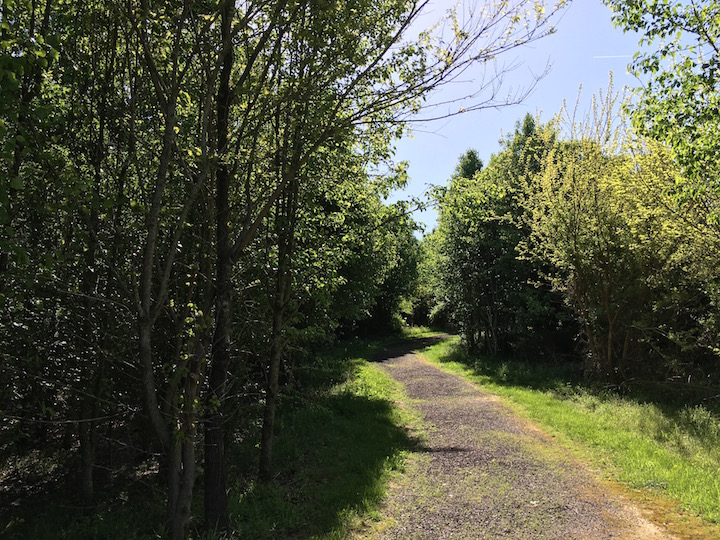The First Day at Chancellorsville Battlefield
 Fighting at Chancellorsville opened on the morning of May 1, 1863, along the Orange Turnpike and the Orange Plank Road. Today, the property where fighting took place along the turnpike—now Route 3—is preserved thanks to the efforts of the Civil War Trust.
Fighting at Chancellorsville opened on the morning of May 1, 1863, along the Orange Turnpike and the Orange Plank Road. Today, the property where fighting took place along the turnpike—now Route 3—is preserved thanks to the efforts of the Civil War Trust.
Called “The First Day at Chancellorsville Battlefield,” the 215-acre site features a walking trail that loops more than a mile around the property to trace the action. For folks who visit, here are three of my favorite highlights:
The Federal “High Water Mark”

Joe Hooker planned to march his army all the way to Fredericksburg, where he planned to pin Confederates against the Rappahannock River and crush them or flush them out of their strong fortifications and force them to flee. Robert E. Lee, of course, exercised an altogether different option by coming out to do battle.
This marker to the 11th U.S. Infantry marks the area of Hooker’s farthest advance. The Regulars ran into unexpected resistance from Lafayette McLaws’ division, which socked the Federal column on the nose. The Federals reeled, then recovered, then tried to make a stand, but Hooker soon ordered his army to fall back toward the Chancellorsville intersection. This spot, in essence, is Hooker’s high water mark for the entire campaign.
“The High Ground”

When George Sykes’ Regulars fell back across this field and up the far slope, they found the strength of Darius Couch’s II Corps moving up to support them. The position was the kind of commanding high ground infantry officers pray for: sloping approaches, open fields of fire, and even a stream at the bottom to break up enemy cohesion. With the XII Corps protecting their flank to the south along the Plank Road, the II Corps might’ve been able to sit atop this perch all day and repulse Confederate attacks.
The view above, taken this morning, looks at the high ground from the Confederate perspective. Here’s what the view looks like from the Federal perspective (in a photo taken in March):

Imagine the Confederates descending the far open slope, trying to maintain their formation’s cohesion as they crossed the stream in the treeline at the foot of the hill, then ascending the open slope in the foreground. What might Federal artillery have done to them? What might concentrated infantry fire have done?
Hooker’s order to fall back uncovered the Federal right flank, though, making this hilltop position vulnerable. Federals had to fall back. V Corps commander George Gordon Meade, Sykes’ immediate superior, was aghast: “My God, if we can’t hold the top of a hill, we certainly cannot hold the bottom of it!”
The Wilderness

Chancellorsville sat on the eastern edge of the 70-square mile expanse of second-growth forest known as the Wilderness. Today, the forests in the area are far more mature than they were in 1863-64, which means the trees are taller and the there’s far less underbrush. However, the walking trail on the First Day at Chancellorsville battlefield offers, without a doubt, one of the best perspectives on what the Wilderness looked like during the Civil War.
I always think of Oliver Otis Howard’s description of the Wilderness: “stunted trees, such as scraggy oaks, bushy firs, cedars, and junipers, all entangled with a thick, almost impenetrable undergrowth, and criss-crossed with an abundance of wild vines.” Imagine trying to march in line of battle, shoulder-to-shoulder, through something like that:

This stretch of wilderness can be found along the northeast edge of the trail, parallel to Route 3. A wayside marker along the way understates the terrain, calling it “Difficult Country.”
(As a side note, my daughter and I helped plant some of the trees on the property back in 2006 thanks to a Park Day project sponsored by the Trust.)
* * *
For decades, the first day at Chancellorsville remained overshadowed by the more famous story of Jackson’s flank attack and mortal wounding. When the Trust preserved this ground, it opened the way for an important reevaluation of Chancellorsville’s larger story. Like all battlefields, this one serves as a useful outdoor classroom, with much to teach. With few monuments and markers, and just enough wayside signs to explain the action, a visitor can have a profound experience walking the hallowed ground.
I would be interested to hear your impressions of the battlefield and your favorite stories from the field.
Least’ we forget their sacrifice…..
Visited for the first time on Sat Apr 30th and joined the Frank O’Reilly led fit walk covering the Day 3 fighting. It is one thing to read about the “dense underbrush and difficult terrain” but yet another to actually see it in person. Hooker was a damn fool to abandon that lovely open high ground on Day 1 and move back into the chaos of the Wilderness woods.
oh.. and I’m also a native WNYer from Wellsville orginally who is a SBU Alum… Go Bonnies! Good to see Bonaventure so well represented on a national forum such as this and Facebook live